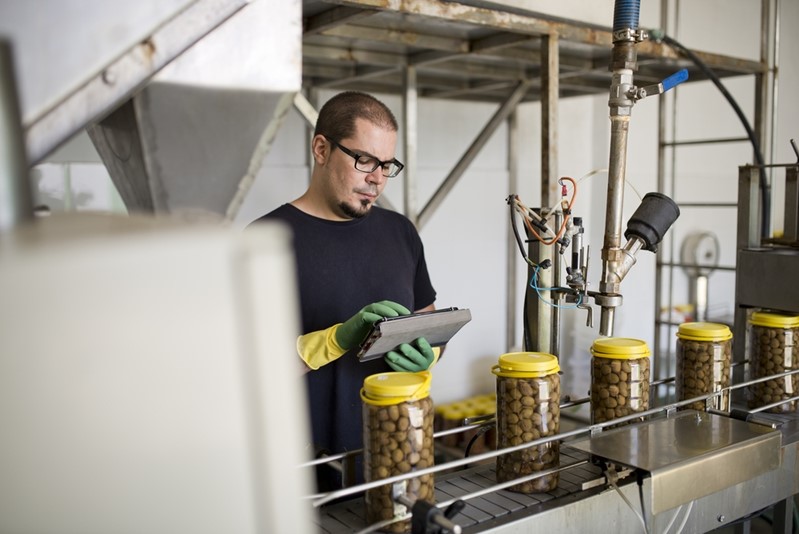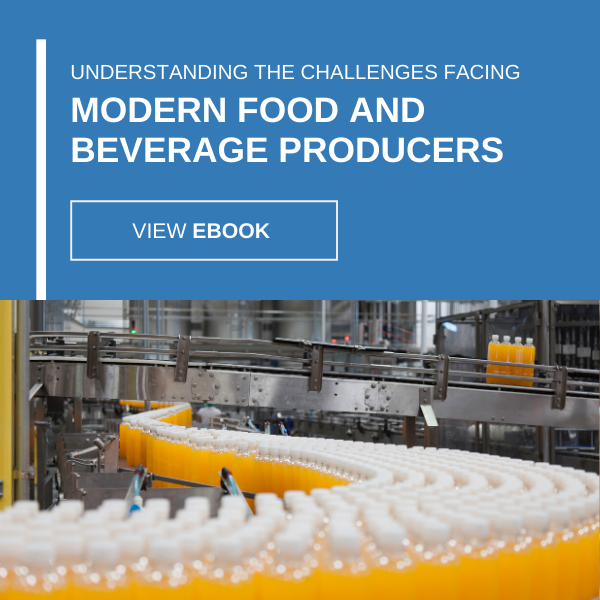
Eliminating Wasteful Operations in Food and Beverage Manufacturing
For such an integral commodity in the lives of hungry consumers, food and beverage manufacturers have a high potential for producing waste. A recent National Resources Defense Council study uncovered as much as 40 percent of all food farmed or produced in the United States goes straight into the trash.
However straightforward this issue may appear, food waste is multifaceted. It is not only limited to what should have been eaten, but how it should have been prepared, packaged, and transported, giving food and beverage manufacturers a much fuller plate than perhaps they previously anticipated. Thankfully, this also affords them many opportunities to achieve leaner processes and heightened organization if they know exactly where to look.
Delicious logistics
Food and beverage manufacturers operate in a very active, fickle consumer market. Tastes change quickly, and conforming to a customer’s palate means the difference between making a sale and going stale.
“Process optimization can decrease the likelihood of waste.”
According to Food Processing, in the decade between 2003 and 2013, the youngest generation of consumers shifted the market appetite away from heavily processed meals in favor of fresher feasts by a factor of 20 percent “over 100 billion eatings.” This trend has also reached the foodservice industry. Everyone from fast food joints to sit-down restaurants have begun to see a substantial swing towards fresh ingredients and on-demand preparation.
At the manufacturing level, as food and beverage businesses transition away from food preservatives that extend the shelf life of the products they create, process optimization can decrease the likelihood of waste. While a Food Waste Alliance survey found 93.4 percent of all waste food manufacturers generate gets repurposed and doesn’t end up in a landfill, that’s still, by the organization’s estimation, 53 lbs. of waste for every $1,000 of revenue. The goal of food and beverage manufacturers should not focus on what to do with the “inevitability” of waste, but rather, what inefficient processes brought on this excess.
Circling back to fresher dietary trends, enhanced logistics and warehousing working in collaboration with marketing and communications teams have the power to sync up all corners of the supply chain. A coordinated effort that adequately records items and transports them to distribution in a timely fashion need not rely on additives.
To accomplish this acceleration, food and beverage manufacturers may need to employ software capable of communication point-of-sale data along the whole of the supply chain to better organize shipping volumes. Intelligent forecasting makes or breaks food and beverage processing. Electronics manufacturers who overstock items only account for the wasted shelf space. Their televisions don’t have expiration dates. Additionally, harder data crunching can align production with a more realistic picture of customer demand, cutting down food waste at the source.

The ways a manufacturer packages its products contributes greatly to efficiency.
Potential for packaging
Packages for foodstuffs are more than just a way to protect products and sell one brand over another. These cans and cardboard boxes have the ability to help eliminate wasteful practices or exacerbate them, depending on whether a manufacturer knows how to employ them properly. Perhaps no other segment of the food and beverage industry understands this issue better than baked goods and snack manufacturers, producing to-go sizes, family packs, and everything in between. The complexity of a varied approach to food and beverage packaging requires manufacturers to consider several factors before reconfiguring their strategies.
First and foremost, diversifying portion sizes to reach a wider consumer market can be both profitable and complex. Before manufacturers undergo such a colossal change to their production line, supervisors should test equipment for variables like losses due to changeover. After all, workers must shut down machines during changeovers, recalibrate them, and reload them with new packaging materials. At the end of the day, these minutes of downtime add up. Offering alternative packaging options like single-serving portions increases the amount of changeover necessary to complete an order, which in turn increases the resources expended on each order, including labor costs. Manufacturers need to cut to the chase – does this selection of packaging choices add valuable profitability to their operations, or does it detract from an otherwise efficient process?
In addition to changeover, the nature of the packaging itself can muddle food plant operations. According to a Packaging Machinery Manufacturers Institute study, versatility in packaging impacts 31 percent of bakery and snack manufacturers who seek to produce variety packs in the near future. As the organization pointed out, these larger items contain more than a single flavor or style of product, meaning they have to be “touched twice.” This factor alone compounds complications in manufacturing operations by tacking on additional steps to production. Again, if variety packs don’t show a reasonably high level of ROI for the effort put into selling them in stores, manufacturers may want to reconsider their production entirely or integrate new technology to mitigate their impact on internal processes.
Finding solutions to help mitigate wasteful actions might appear daunting, but in reality, doing so has the potential to add value across many disparate operations within a food or beverage processing plant. Companies retain resources instead of expending them unnecessarily. Moreover, when managers study plant procedures to uncover wasteful practices underpinning processes, they may find new, easy-to-fix areas to unkink or slim down manufacturing, optimizing long-term operations.





